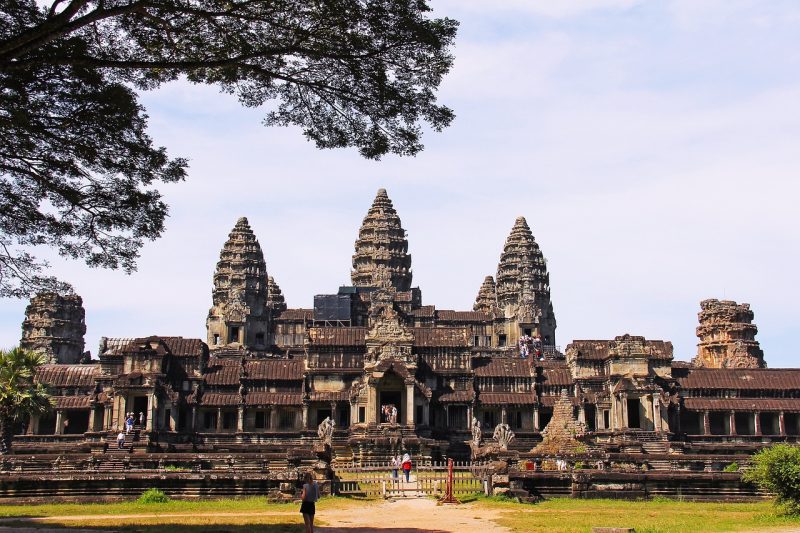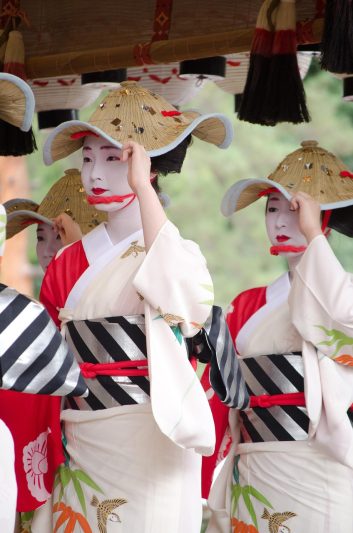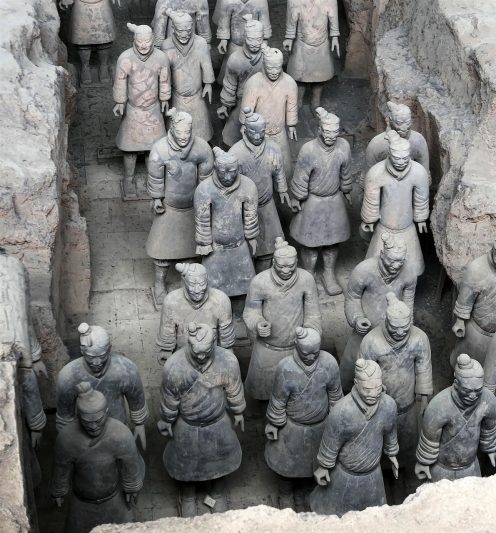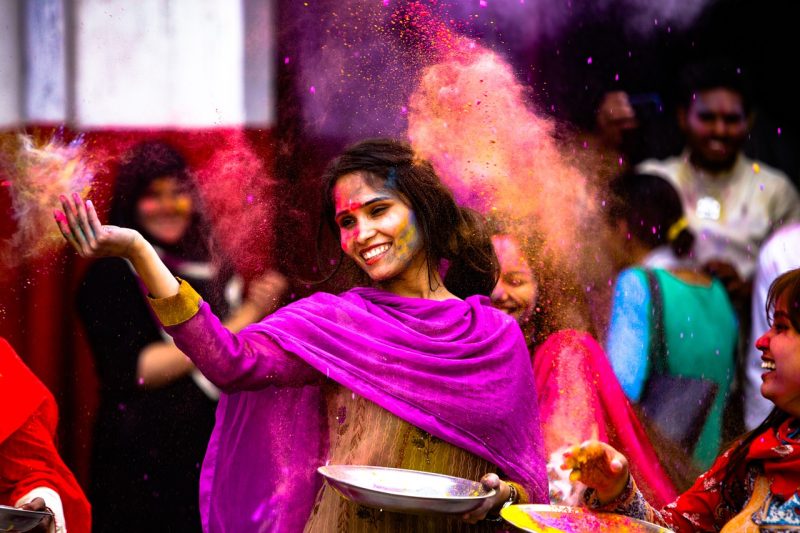Exploring unique cultural spots in Asia unveils a rich tapestry of history, tradition, and architectural marvels that captivate travelers seeking authentic experiences.
Angkor Wat Temples: Discover Cambodia’s Iconic Architectural Marvels
The Temples of Angkor Wat stand as a monumental testament to the architectural and cultural prowess of the Khmer Empire, which flourished from the 9th to the 15th centuries.

As one of the most unique cultural spots in Asia, this awe-inspiring complex continues to captivate visitors with its intricate carvings, vast temple grounds, and historical significance.
Located in the lush jungles of Cambodia, this UNESCO World Heritage site is not only the largest religious monument in the world but also a symbol of national pride for Cambodians. Originally constructed as a Hindu temple dedicated to the god Vishnu, Angkor Wat later transitioned into a Buddhist temple, reflecting the region’s evolving spiritual landscape.
The intricate bas-reliefs and towering spires of the temple complex showcase the artistic mastery of its builders, with scenes depicting Hindu mythology and historical events that continue to captivate visitors from around the globe. Exploring Angkor Wat is akin to stepping back in time, where every stone tells a story of devotion and ingenuity. The grand entrance, flanked by a wide moat, leads to a series of galleries adorned with exquisite carvings that narrate tales of gods and kings.
As one wanders through the temple’s corridors, the interplay of light and shadow creates an ethereal atmosphere, enhancing the sense of wonder. The central tower, representing Mount Meru—the axis of the universe in Hindu cosmology—rises majestically above the surrounding landscape, inviting contemplation and reverence. Visitors often find themselves entranced by the beauty of the sunrise illuminating the temple’s silhouette, a sight that has become iconic in travel photography and a must-see for anyone venturing to Cambodia. I found some great hotels for our upcoming trip.
The Floating Markets of Bangkok, Thailand
The floating markets of Bangkok offer a vibrant glimpse into Thailand’s rich cultural tapestry and its deep-rooted traditions. These bustling markets, where vendors sell their wares from boats gliding along the canals, provide an experience that is both unique and exhilarating. Among the most famous is Damnoen Saduak, where colorful long-tail boats laden with fresh produce, handcrafted goods, and delicious street food create a lively scene.

The air is filled with the enticing aromas of grilled meats and sweet desserts, drawing in locals and tourists alike who seek to indulge in authentic Thai flavors. Navigating through the narrow waterways, visitors are treated to a sensory feast as they interact with friendly vendors who enthusiastically showcase their products. The vibrant colors of fruits and vegetables contrast beautifully with the serene backdrop of traditional wooden houses lining the canals.
Each market has its own character; some are more tourist-oriented while others remain true to their local roots, offering an authentic experience of daily life in Thailand. As shoppers haggle for prices and sample delicacies like mango sticky rice or coconut pancakes, they become part of a lively exchange that has persisted for generations. The floating markets not only serve as a hub for commerce but also as a cultural landmark that embodies the spirit of community and connection.
The Geisha District of Gion in Kyoto, Japan

In Kyoto, Japan, the Geisha District of Gion stands as a living testament to the country’s rich cultural heritage and artistic traditions. Renowned for its historic wooden machiya houses and narrow cobblestone streets, Gion is where visitors can glimpse the elusive world of geishas—skilled entertainers trained in traditional Japanese arts such as music, dance, and tea ceremony. As dusk falls, the district comes alive with the soft glow of lanterns illuminating the pathways, creating an enchanting atmosphere that transports onlookers to another era.
Walking through Gion, one might catch sight of a geisha or maiko—apprentice geisha—gracefully making their way to an engagement. Dressed in elaborate kimonos adorned with intricate patterns and vibrant colors, their presence is both captivating and mysterious. The art of being a geisha is steeped in centuries-old traditions, requiring years of training and dedication.
Visitors often find themselves drawn to the allure of this unique culture, eager to learn about the rituals and practices that define a geisha’s life. Gion not only offers opportunities for cultural immersion but also serves as a reminder of Japan’s commitment to preserving its artistic heritage amidst modernity.
The Terracotta Army in Xi’an, China

The Terracotta Army in Xi’an is one of the most significant archaeological discoveries of the 20th century, revealing insights into China’s ancient history and imperial grandeur. Discovered in 1974 by local farmers digging a well, this vast collection of life-sized clay soldiers was created to accompany Qin Shi Huang, China’s first emperor, in his journey to the afterlife. The army consists of thousands of intricately crafted figures, each with unique facial features and expressions, reflecting the artistry and craftsmanship of ancient Chinese artisans.
Visitors to Xi’an are often awestruck by the sheer scale of this underground army, which includes not only soldiers but also chariots and horses arranged in battle formation. The site is divided into several pits, each revealing different aspects of this remarkable burial complex. As one walks through the exhibition halls, it becomes evident that these figures were not merely decorative; they served a profound purpose in demonstrating the emperor’s power and ensuring his protection in death.
The ongoing excavation continues to uncover new artifacts, providing historians with valuable information about military practices and societal structures during the Qin Dynasty. The Terracotta Army stands as a powerful reminder of China’s rich history and its enduring legacy.
The Holi Festival in India – Unique Cultural Spots in Asia

The Holi Festival in India is a vibrant celebration that marks the arrival of spring and symbolizes love, joy, and renewal. Known as the Festival of Colors, Holi is celebrated with great enthusiasm across the country, drawing people from all walks of life to partake in its festivities. Traditionally observed on the full moon day in March, Holi involves throwing colored powders and water at one another, creating a kaleidoscope of hues that fills the air with laughter and cheer.
This exuberant display fosters a sense of unity among participants as they come together to celebrate friendship and forgiveness. The origins of Holi are steeped in mythology, with stories that recount the triumph of good over evil. One popular legend involves Lord Krishna playfully throwing colors on his beloved Radha and her friends, which has become a cherished tradition over time.
In addition to color throwing, Holi is also marked by communal feasting, music, and dance. Families prepare special sweets like gujiya and bhang lassi to share with friends and neighbors, reinforcing bonds within communities. As night falls on Holi’s eve, bonfires are lit to symbolize the burning away of negativity and past grievances.
This festival not only celebrates the arrival of spring but also serves as a reminder of love’s power to transcend barriers.
The Great Wall of China: Unique Cultural Spots in Asia

The Great Wall of China is an awe-inspiring feat of engineering that stretches over 13,000 miles across northern China. Originally built to protect against invasions from nomadic tribes, this monumental structure has evolved into a symbol of China’s enduring strength and resilience throughout history. Construction began as early as the 7th century BC during various dynasties but reached its peak during the Ming Dynasty (1368-1644), when extensive renovations were undertaken to fortify its defenses.
Visitors to the Great Wall are often struck by its breathtaking vistas as it winds through rugged mountains and lush valleys. Each section offers a unique perspective on this ancient marvel; some areas are well-preserved tourist attractions like Badaling, while others remain untouched by modernity, allowing for a more authentic experience. Hiking along the wall provides an opportunity to reflect on its historical significance while taking in panoramic views that showcase China’s diverse landscapes.
The Great Wall stands not only as a physical barrier but also as a testament to human ingenuity and determination—a reminder that great achievements can arise from collective effort.
The Batu Caves in Malaysia – Unique Cultural Spots in Asia

The Batu Caves in Malaysia are a remarkable natural wonder that attracts visitors with their stunning limestone formations and rich cultural significance. Located just outside Kuala Lumpur, this series of caves serves as a prominent Hindu shrine dedicated to Lord Murugan, one of the most revered deities in Hinduism. Towering above the entrance is a colossal golden statue of Lord Murugan that greets pilgrims and tourists alike as they ascend the 272 steps leading into the caves.
Inside, visitors are treated to an awe-inspiring sight: vast caverns adorned with colorful statues and intricate murals depicting Hindu mythology. The main cave houses several shrines where devotees come to offer prayers and seek blessings during festivals such as Thaipusam—a vibrant celebration marked by elaborate rituals and processions. The Batu Caves not only serve as a spiritual sanctuary but also as an important cultural landmark that reflects Malaysia’s diverse heritage.
As visitors explore this sacred site, they are reminded of the harmonious coexistence of different cultures within Malaysia’s multicultural society.
The Forbidden City in Beijing, China

The Forbidden City in Beijing stands as an iconic symbol of China’s imperial history and architectural grandeur. Once home to emperors during the Ming and Qing dynasties, this sprawling palace complex served as both a political center and a residence for royalty for nearly 500 years. Enclosed by towering walls and a moat, it earned its name due to its restricted access; commoners were forbidden from entering without permission from the emperor.
As visitors step through the imposing Meridian Gate into this UNESCO World Heritage site, they are transported into a world steeped in history and tradition. The intricate design features traditional Chinese architecture characterized by ornate roofs adorned with golden tiles and vibrant red walls that symbolize good fortune. Each courtyard within the Forbidden City tells its own story—whether it be through grand halls used for ceremonies or tranquil gardens designed for reflection.
Guided tours provide insights into daily life within these walls while highlighting significant events that shaped China’s history. The Forbidden City remains an enduring testament to China’s rich cultural legacy—a place where history comes alive amidst stunning artistry and architectural brilliance.
If you’re looking for more travel inspiration, check out this article on attractions from Kayseri to Cappadocia. This guide will take you through some of the most unique and breathtaking spots in Turkey, offering a different perspective on cultural exploration. Whether you’re a digital nomad dreaming of new adventures or simply looking for a weekend getaway, these articles will surely awaken your wanderlust and soul.
FAQs
What are some unique cultural spots in Asia?
Some unique cultural spots in Asia include the Angkor Wat in Cambodia, the Great Wall of China, the Taj Mahal in India, the temples of Bagan in Myanmar, and the historic city of Kyoto in Japan.
What makes these cultural spots unique?
These cultural spots are unique because they are rich in history, architecture, and traditions that have been preserved for centuries. They offer visitors a glimpse into the diverse and vibrant cultures of Asia.
How can these cultural spots awaken your soul?
Visiting these cultural spots can awaken your soul by providing a sense of awe and wonder at the beauty and significance of these historical and cultural landmarks. They offer a chance for introspection and a deeper appreciation for the world around us.
Are these cultural spots popular tourist destinations?
Yes, these cultural spots are popular tourist destinations and attract millions of visitors from around the world each year. They are often considered must-see attractions for travelers interested in history and culture.
What should visitors keep in mind when visiting these cultural spots?
Visitors should be respectful of local customs and traditions when visiting these cultural spots. It’s important to follow any rules or guidelines set by the local authorities to help preserve these important cultural landmarks for future generations.

Be the first to comment